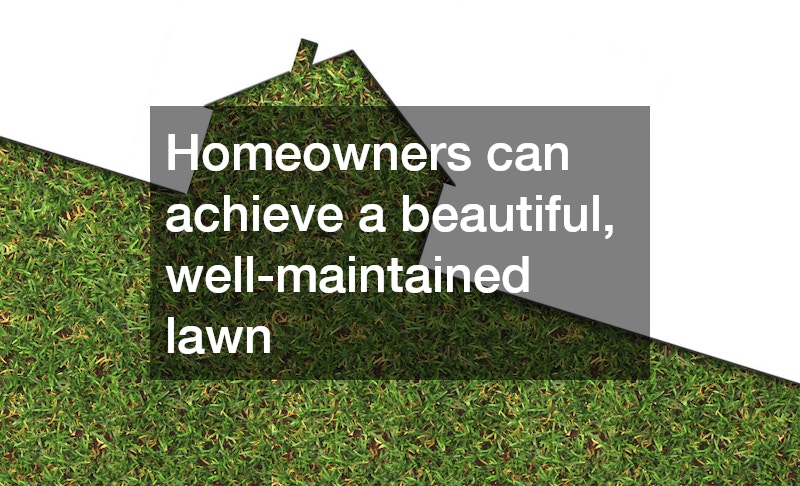If you’re a beginner looking to get into lawn care, you may find the range of tasks a bit overwhelming. However, by following a few foundational tips, you can set yourself up for success and create a beautiful lawn. From seeding to mowing, these basic techniques can transform your yard and help you avoid common pitfalls.
Here are five essential lawn care tips for beginners and how they can be customized to fit your specific lawn needs.
1. Choose the Right Spreader
When starting out in lawn care, many homeowners opt for basic, inexpensive spreaders. However, not all spreaders are created equal. Cheap plastic spreaders with hollow wheels, such as some models by Scotts, can lead to uneven fertilizer distribution and even create stripes on your lawn, which may damage its appearance and health. Instead, invest in a quality spreader with solid plastic or rubber wheels. This will provide more even coverage and prevent common issues associated with uneven fertilizer application.
For smaller yards, a hand spreader can be an affordable and practical choice, saving you money while ensuring you have control over fertilizer application. By using the right spreader, you can better control fertilizer distribution, avoiding issues like burn marks and ensuring your lawn gets the nutrients it needs.
2. Edge Your Lawn Regularly
Edging is an often-overlooked step in lawn care, but it can make a huge difference in the overall appearance of your yard. Edging creates a clean boundary between the lawn and other areas, like driveways, sidewalks, and flower beds, giving your lawn a professional, well-maintained look. Beginners should start with a moderately priced electric edger or even a manual edging tool if budget is a concern.
For overgrown edges, it can be tough the first time. Try using a flat shovel to clear out the soil and grass along the border before using your edger. Regular edging will quickly become easier, helping to maintain a crisp line around your lawn. This technique can be customized for different areas in your yard—concrete edges can handle sharp lines, while tar driveways may require a softer approach using a string trimmer.
3. Seed in the Fall, Not Spring
One of the biggest mistakes beginners make is seeding at the wrong time. Although it might be tempting to reseed a patchy lawn in the spring, cool-season grasses have a better chance of thriving if seeded in the fall. The cooler weather helps the new grass avoid summer stress, giving it a better chance to develop strong roots. When seeding, be sure to keep the ground moist until germination begins, which can take from five days to two weeks, depending on the grass type.
4. Mow Frequently and Avoid Scalping
Many homeowners delay mowing until the grass grows tall, only to then mow it very short to reduce the need for frequent mowing. However, this method, known as “scalping,” stresses the grass, weakening its ability to recover and making it more susceptible to heat stress and disease. Instead, aim to keep your lawn at a height of about three to four inches, cutting off no more than an inch each time you mow.
Mowing every three to five days is optimal, as it encourages strong, deep roots and keeps the grass healthy. As you get into a routine, you’ll find mowing can actually be a quick and satisfying task that improves your lawn’s appearance and health. Adopting this regular approach to mowing is one of the most effective ways to maintain a beautiful lawn.
5. Use Slow-Release Fertilizers
For beginners, fertilizing can be overwhelming, especially with so many types on the market. Slow-release fertilizers are ideal, as they provide nutrients gradually, reducing the risk of burning your lawn from over-application. Scotts offers a straightforward four-step program, with fertilizers designed for each part of the growing season. This approach simplifies the process by giving clear instructions on how and when to apply each type of fertilizer.
Getting into lawn care as a beginner doesn’t have to be daunting. By following these foundational tips, homeowners can achieve a beautiful, well-maintained lawn. Each step, from choosing the right spreader to using slow-release fertilizers, will not only improve the look of your yard but also make lawn care a more enjoyable experience. With patience and the right practices, your lawn will thrive year-round.
.

